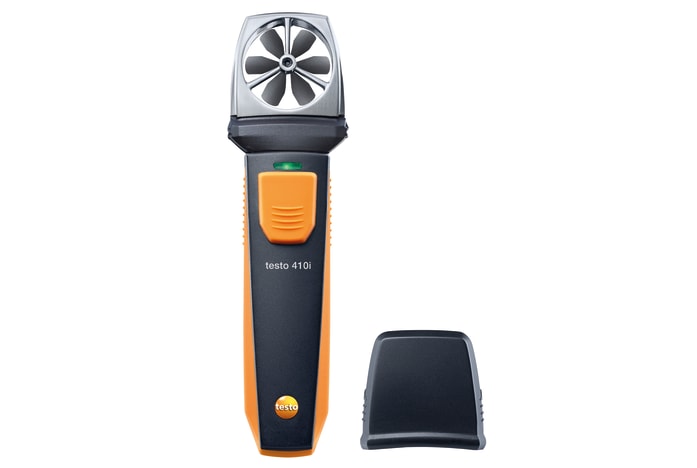All You Required to Find Out About Anemometers: Just How They Function, Why They Issue, and Where to Use Them
Anemometers, however frequently neglected in the realm of clinical tools, play a crucial duty in numerous areas, providing valuable insights right into wind speed and airflow patterns. Comprehending the mechanics behind these tools is necessary for any person seeking to harness the power of this information. From meteorologists tracking weather condition patterns to designers developing frameworks with wind lots in mind, the applications of anemometers are far-ranging and diverse. As we dig right into the intricacies of anemometer technology, we will reveal the inner functions of these devices, their importance, and the vital considerations when selecting the ideal anemometer for specific applications.

Anemometer Essentials
An essential tool utilized to measure wind speed and direction, the anemometer plays a crucial role in meteorology and various industries. An anemometer normally contains three or four cups that revolve in the wind, a vane that aims right into the wind, and sensing units to track the rotations or movements. By determining the rotations or activities over a details period, the anemometer can figure out wind speed. The vane aids identify wind direction by pointing right into the wind, supplying valuable information for climate forecasting, aeronautics, maritime procedures, environmental monitoring, and wind power applications.
There are different kinds of anemometers available, consisting of mug anemometers, vane anemometers, hot-wire anemometers, and sonic anemometers, each with its distinct functions and applications. Mug anemometers are typically made use of for basic wind speed measurements, while vane anemometers are liked for directional measurements.
Principles of Anemometer Operation
Structure on the fundamental understanding of anemometer essentials, the principles of anemometer operation clarify the mechanics behind wind rate and instructions measurements. Mug anemometers, for circumstances, have three or even more mugs that capture the wind, creating them to rotate faster as the wind rate boosts. Hot-wire anemometers rely on a heated cord that cools down as wind passes over it, with the rate of cooling down determining the wind speed.
Value of Anemometers
The relevance of anemometers in weather forecasting and numerous sectors can not be overstated. Anemometers play a critical function in gauging wind rate and direction, offering vital data for climate forecasting, environment studies, environmental surveillance, and air travel procedures. Meteorologists depend on anemometers to collect precise wind information, helping them comprehend weather condition patterns, predict tornados, and concern timely cautions to the public. In markets such as building, farming, eco-friendly energy, and maritime procedures, anemometers are utilized to maximize procedures, guarantee safety and security, and enhance performance. As an example, wind farm drivers make use of anemometers to evaluate wind conditions and make the most of electrical energy production from wind generators. In the maritime industry, anemometers help ship navigation by supplying real-time wind details to captains, aiding them make informed choices to make sure secure trips. Overall, anemometers are vital devices that add significantly to safety, efficiency, and informed decision-making in weather forecasting and a vast array of industries.
Applications Throughout Different Industries
Applications of anemometers extend throughout diverse industries, showcasing their convenience and energy past meteorology. In the renewable resource field, anemometers play an important role in assessing wind problems for wind farm positionings, making certain ideal power production. Industries like building and mining make use of anemometers to keep an eye on wind speeds, vital for security procedures, especially when operating at heights or in open-pit mines where solid winds can position hazards. Anemometers are likewise indispensable in the air travel market, aiding pilots in their website recognizing airspeed and wind instructions for secure liftoffs and touchdowns. The maritime market advantages from anemometers for ship navigation, aiding sailors prepare for weather changes and adjust paths accordingly. In agriculture, anemometers assist farmers in managing plant spraying by giving real-time data on wind rate to stay clear of drift. Moreover, anemometers locate applications in HVAC systems to optimize airflow and boost power performance in structures. The varied usage instances of anemometers emphasize their significance across numerous industries, highlighting their crucial role in boosting functional safety and efficiency (anemometer).

Selecting the Right Anemometer for Your Requirements
For general purposes, a mug anemometer is ideal for gauging wind rate, while a vane anemometer offers wind direction information. Hot-wire anemometers are ideal for reduced airspeed measurements, and ultrasonic anemometers provide high precision and toughness.

Conclusion
In verdict, anemometers play an essential function in measuring wind rate and direction across numerous industries. It is vital to consider the relevance of anemometers in order to make educated choices when selecting the most ideal device for determining wind problems.
There are various types of anemometers offered, consisting of cup anemometers, vane anemometers, hot-wire anemometers, and sonic anemometers, each with its one-of-a-kind attributes official source and applications. Mug anemometers are commonly utilized for fundamental wind rate measurements, while vane anemometers are chosen for directional measurements. Hot-wire anemometers are appropriate for reduced airspeeds, and sonic anemometers are perfect for high-precision measurements in research study and commercial setups.Structure on the foundational understanding of anemometer basics, the concepts of anemometer operation illuminate the mechanics behind wind speed and direction visit homepage measurements. For general functions, a cup anemometer is appropriate for determining wind speed, while a vane anemometer supplies wind instructions information.